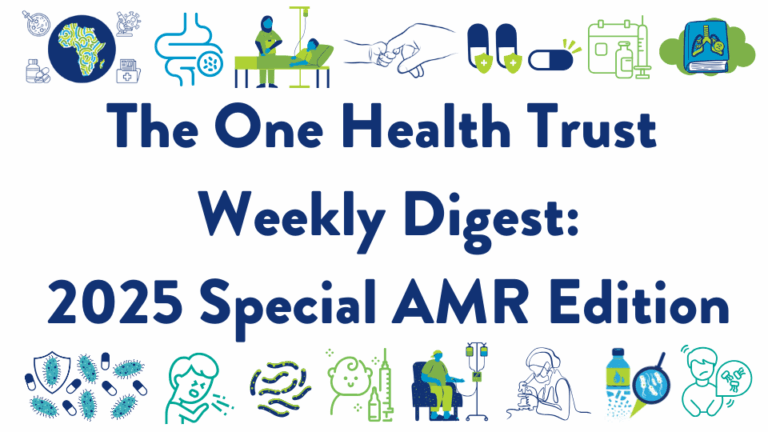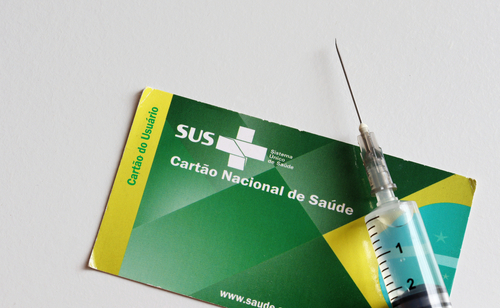March 04, 2019

Supplemental nutrition during the first three years of life increases schooling attainment. Researchers at CDDEP and the University of Pennsylvania evaluated the long-term impact of India’s Integrated Child Development Services (ICDS) program, the world’s largest mother and child welfare program, on schooling attainment of adolescents and adults in India. Researchers combined data on socioeconomic status, educational attainment, birth year, and migration status with the year an ICDS center opened to determine whether individuals encountered the ICDS program. Men aged 15 to 54 years and women aged 15 to 49 years who received ICDS assistance during their first three years of life completed 0.1–0.3 more grades of schooling than those who were not exposed. The effect was stronger among women than men. [EDCC]
Waning immunity likely cause of rise in US mumps cases. Secondary vaccine failure, or waning immunity, is a likely explanation for the rise in mumps cases in the US despite high immunization rates. Researchers analyzed markers of measles and mumps immunity in 98 healthy adults at approximately 7 and 17 years after they received the two-dose Measles, Mumps, and Rubella (MMR) vaccine. Mumps IgG titers significantly declined during this ten-year period. Neutralizing antibody titers were low but stable perhaps indicating that levels dropped before the seven-year post-vaccination mark. [Vaccine]
Estimated case-fatality ratios for measles. Between 1990 and 2015, the mean case-fatality ratio of measles in low- and middle-income countries was 2.2 percent. Researchers based this estimate on a systematic review of 124 peer-reviewed journal article studies published between January 1980 and December 2016. In community settings, the mean case-fatality ratio was 1.5 percent, and, in hospital settings, the ratio was 2.9 percent. The mean projected case-fatality ratio for 2016 to 2030 was estimated at 1.3 percent. [The Lancet]
Majority of global measles cases in 2013 to 2017 were due to failures in vaccination programs. Despite global progress in disease eradication, there were 634,139 measles cases reported between January 2013 and December 2017. Over 63 percent of the 434,956 cases with available vaccination data would have been prevented if the patient had received the appropriate number of vaccine doses according to existing recommendations, researchers found. Thirty-six percent of measles cases were deemed non-preventable, as patients had received two-doses of vaccine, but remained susceptible or were too young to receive one or both vaccine doses. Over 30,000 cases of non-preventable measles cases occurred, mostly in Africa, because patients were only eligible for one dose under the country’s national immunization program. [The Lancet]
Introduction of pneumococcal vaccine associated with decreased incidence of pneumonia in Kenya. In January 2011, a 10-valent pneumococcal non-typeable Haemophilus influenzae protein D conjugate vaccine (PCV10) was introduced in Kenya and a catch-up campaign vaccinated 4,997 children aged 2–11 months and 23,298 children aged 12–59 months. Immediately before vaccine introduction, the annual incidence of clinically-defined pneumonia was 1,220 per 100,000. This was reduced by 329 per 100,000 following vaccination. At Kilifi County Hospital, vaccine introduction was temporally associated with a 48 percent reduction in radiologically-confirmed pneumonia and a 27 percent decrease in hospital admissions for clinically-defined pneumonia. [The Lancet]
Plazomicin for complicated UTI. Once-daily plazomicin was noninferior to meropenem for the treatment of complicated urinary tract infections (UTIs) caused by multidrug-resistant Enterobacteriaceae, according to the results of a phase 3 clinical trial involving 609 patients. On day 5 of treatment, the composite cure rate was 88 percent for those treated with plazomicin and 91 percent for those treated with meropenem. Compared to those in the meropenem group, a higher proportion of patients in the plazomicin group had microbiologic eradication of Enterobacteriaceae that were not susceptible to aminoglycosides (78.8 versus 68.6 percent) and Enterobacteriaceae that produce extended-spectrum β-lactamases (82.4 versus 75.0 percent). [NEJM]
Fluconazole not tied to stillbirths and neonatal deaths. Use of the antifungal drug fluconazole during pregnancy was not associated with significantly increased risks of stillbirth or neonatal death, according to the results of a large multi-national cohort study that assessed the outcomes of 1,485,316 pregnancies. The rate of stillbirths among those exposed to fluconazole, which is used to treat serious fungal or yeast infections, was 2.7 stillbirths per 1,000 pregnancies, and the rate of stillbirths among those not exposed to the drug was 3.6 per 1,000 pregnancies. The rates of neonatal deaths were 1.2 and 1.7 per 1,000 pregnancies among exposed and nonexposed women, respectively. [JAMA]
Impact of Alive & Thrive initiative on breastfeeding in rural Burkina Faso. Between June 2015 and July 2017, researchers conducted a randomized trial with over 2,000 mothers from Boucle du Mouhoun, Burkina Faso to assess the impact of the Alive & Thrive intervention on breastfeeding outcomes. The intervention combined health worker communication training and community mobilization activities to increase breastfeeding. After the intervention, the reported prevalence of exclusive breastfeeding was 38.9 percent higher among mothers in the intervention group compared to the control group. [The Lancet]
Novartis pharmaceutical access program did not improve availability of NCD drugs in Kenya. In Kenya, Novartis Access made 14 non-communicable disease medicines, packaged with program-specific branding, available to 69 intervention health facilities. Drugs could be purchased through the Mission for Essential Drugs and Supplies (MEDs), and all facilities could continue purchasing drugs from previously utilized outlets. After a 15-month intervention period, the availability of the selected medicines did not change and drug availability at the patient household-level did not change. There was a significant increase in access to amlodipine and metformin at intervention health facilities compared to 58 control facilities. [The Lancet Global Health]
Photo Credit: Shutterstock











